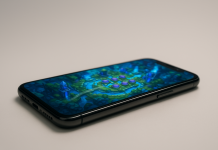Watching TV over the internet doesn’t use much bandwidth, although the amount depends on what’s on the screen. Research from American ISP Tachus revealed that streaming HD consumes between 1.1GB (Peacock) and 3GB (YouTube, Netflix, ESPN+) per hour. Disney+ and Amazon Prime are somewhere in the middle. Estimates for live TV place the figure closer to 2GB, but the type of content consumed does play a role.
Sports dominate the live TV niche but more interactive streams have crept into the space. Netflix started the charge with its Interactive Specials, which include Black Mirror: Bandersnatch and Unbreakable Kimmy Schmidt: Kimmy vs. the Reverend. As well as this, British company Paddy Power has a similar product, namely, casino games with live dealers. These are mostly table games and their variants but wheel-based experiences, such as Paddy’s Mansion Heist and Treasure Island, are available too. These can be more accessible to players used to TV game shows, a genre that’s grown popular again recently.
 Source: Pexels
Source: Pexels
The worry is that technology tends to plateau. For instance, mobile phones have enjoyed only incremental upgrades for the better part of a decade, with Samsung’s Galaxy Z Flip and Fold devices representing one of the few design pivots in the history of the smartphone. For streaming media, a plateau could mean a conflict between what somebody wants to watch and whether their internet can handle it. Is that likely to happen?
Fixed Broadband Speeds
The SpeedTest website indicates that Australia’s fixed broadband speeds are slow worldwide (79th) but maintain a respectable 78.47Mbps. As a point of comparison, Singapore tops the leaderboard at 330.98Mbps, closely followed by Hong Kong (306.58Mbps), and the United Arab Emirates (304.24Mbps). Australia’s position is a new low. The nation fell four positions lately to stand between Belarus (78.51Mbps) and Egypt (77.89).
It’s worth noting that mobile broadband speeds can be significantly faster than fixed connections, a reversal of what might be expected. The UAE’s mobile broadband is the only network that tops 400Mbps – 453.87Mbps. This is due to newer infrastructure, such as 5G. SpeedTest’s parent, Ookla, claims that mobile speeds are climbing faster than fixed speeds. Overall, mobile connections got 59.5% faster recently, compared to 31.9% at home.
 Source: Pexels
Source: Pexels
All this leads us to a question – just how fast can the internet possibly get? The answer is surprising. In 2024, researchers at Aston University in Birmingham, UK, sent data at 301,000,000Mbps – or 301 terabits per second. This figure was 4.5m times faster than the average connection in the country, which was a paltry 69.4Mbps. Aston explained the Aston explained the process in a press release, claiming scientists had to ‘unlock’ new wavelength bands and invent “optical amplifiers” to increase speeds.
Of course, it’s debatable whether consumers need super-high-speed broadband when the services that depend on it have requirements in the single digits. CNET recommends that download speeds of 40 – 100Mbps should be sufficient for single users, 100 – 500Mbps for a pair of users, and 500 – 1,000Mbps for three people. These figures assume high volume usage, however. Put another way, 1,000Mbps seems to be the expert’s pick for the maximum necessary connection speed at home.



